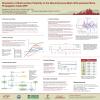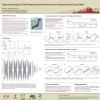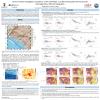Poster #191, Computational Science (CS)
Enhancing CyberShake simulations for engineering applications
Poster Image:

Poster Presentation
2020 SCEC Annual Meeting, Poster #191, SCEC Contribution #10463 VIEW PDF
st version of the Graves-Pitarka rupture generator, which includes increased variability in rupture parameters and decreased coherency. We examine the influence of reduced rupture coherence and rupture velocity on hazard estimates.
We have also enabled end-to-end hybrid broadband CyberShake, in which deterministic low-frequency (1Hz) physics-based simulation results are combined with stochastic high-frequency results to produce broadband seismograms up to 50 Hz. To support this capability, we have integrated the Graves and Pitarka high-frequency stochastic approach released in the SCEC Broadband Platform (version 19.4) into the CyberShake workflows.
We will present CyberShake PSHA simulation results using the new rupture generator, assessing its impact on ground motion and overall hazard. We will also present our updated hybrid broadband results for sites around Southern California.
SHOW MORE
We have also enabled end-to-end hybrid broadband CyberShake, in which deterministic low-frequency (1Hz) physics-based simulation results are combined with stochastic high-frequency results to produce broadband seismograms up to 50 Hz. To support this capability, we have integrated the Graves and Pitarka high-frequency stochastic approach released in the SCEC Broadband Platform (version 19.4) into the CyberShake workflows.
We will present CyberShake PSHA simulation results using the new rupture generator, assessing its impact on ground motion and overall hazard. We will also present our updated hybrid broadband results for sites around Southern California.
SHOW MORE






























































